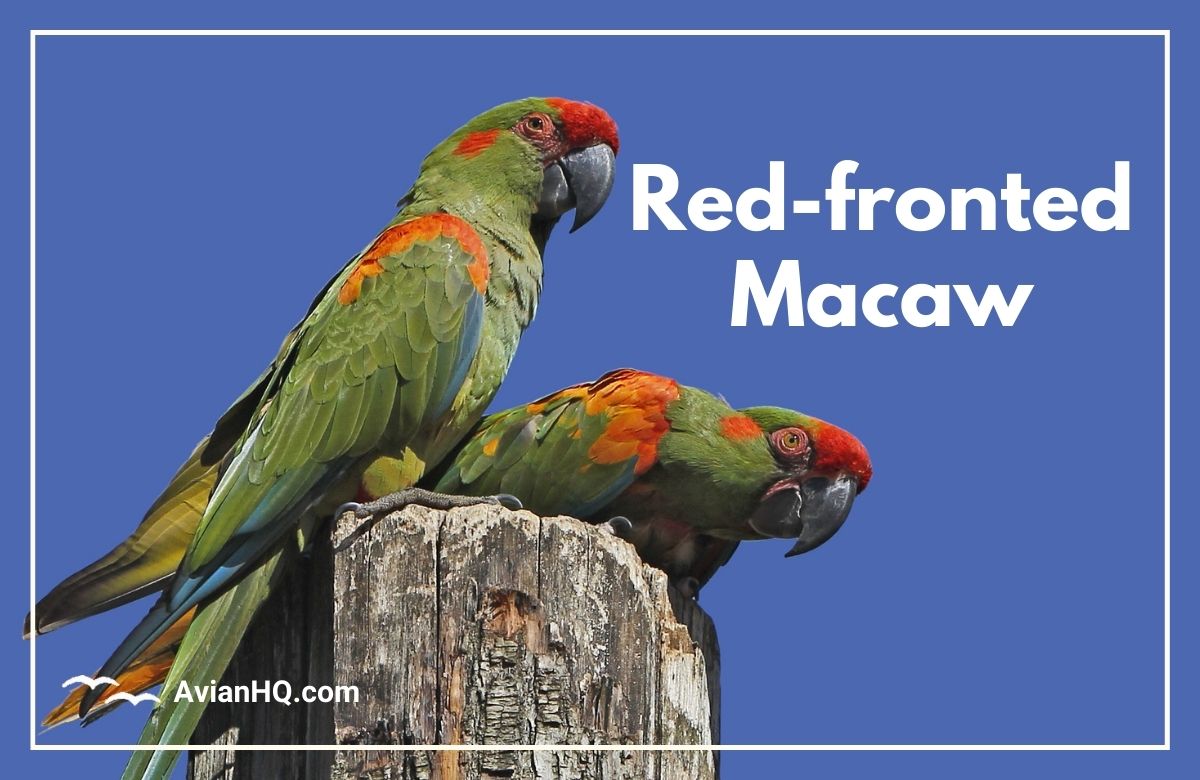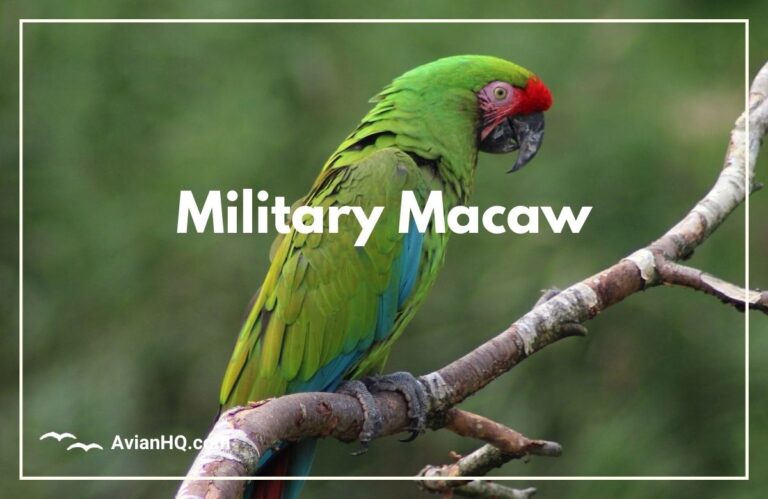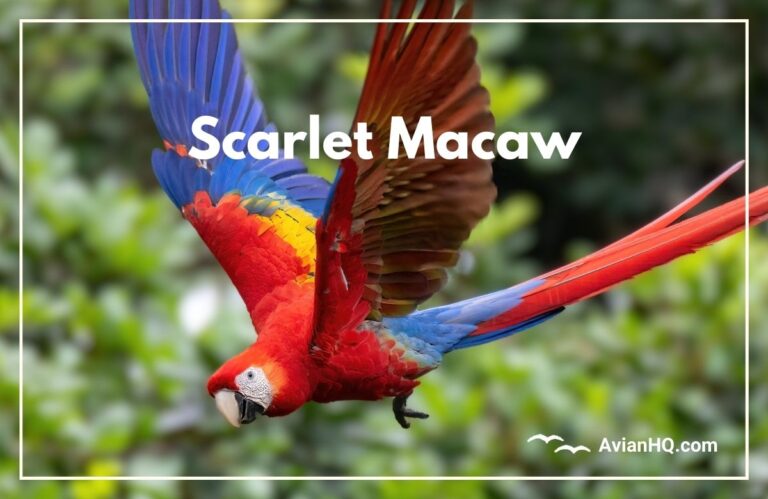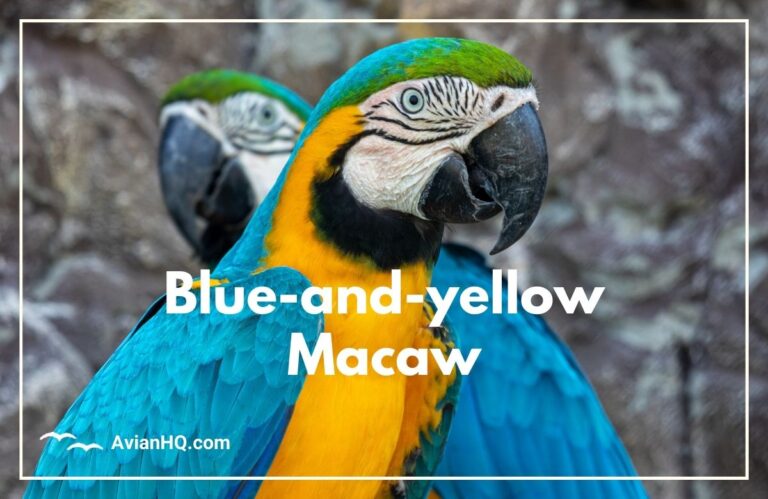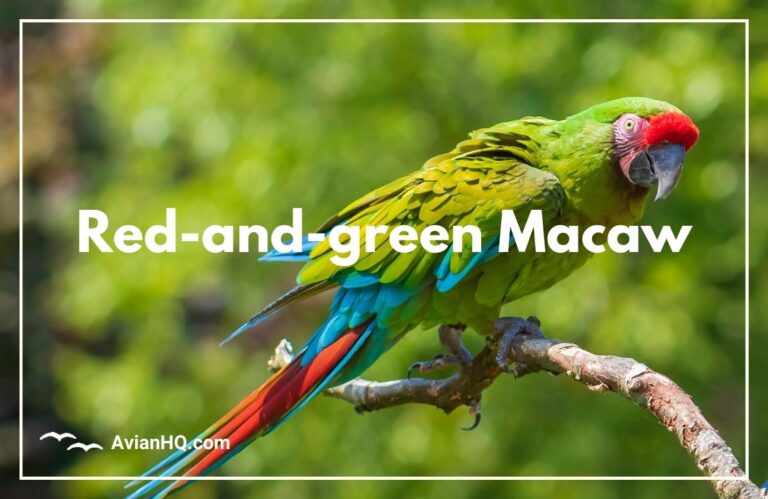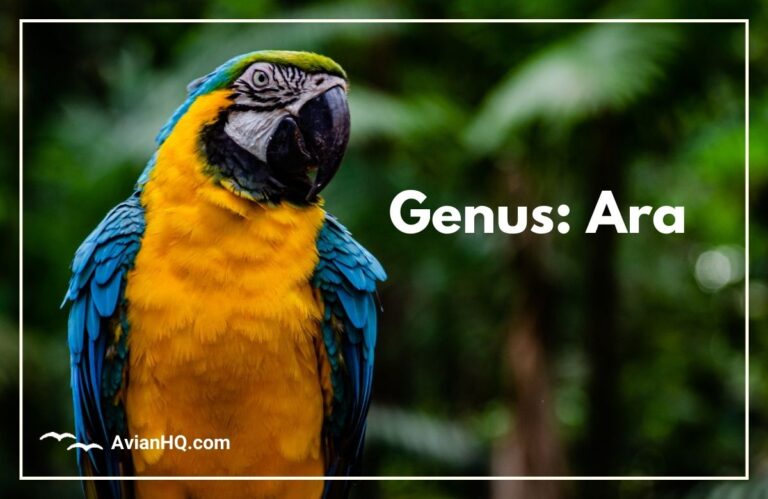Red-fronted Macaw (Ara rubrogenys)
The brilliant plumage of parrots has captivated people for centuries. When you first catch sight of a Red-fronted Macaw soaring through the dry forests of Bolivia, you’ll understand why. With its vibrant red and green feathers, this endangered macaw is a real head-turner.
The Red-fronted Macaw is a medium-sized, mostly green parrot that lives in a small region of Bolivia. It measures 21.5-23.5 inches (55-60 cm) from the tip of its tail to the top of its head. Weighing around 18-19 ounces (525-550 grams), its bright red forehead is what gives this macaw its name.
This species sticks close to a semi-desert area tucked against the Andes mountains in south-central Bolivia. It’s the only macaw adapted to the dry conditions found here, over 1.5-3 miles (1,500-3,000 m) above sea level. The habitat is full of cacti and thorny trees and shrubs. With limited large trees, the macaws nest inside deep crevices along steep cliff faces.
Outside of this restricted home range, Red-fronted Macaws are rarely seen. But protecting these specialized parrots within such a small natural habitat has proven to be an ongoing challenge.
With their dazzling colors and noisy, social nature, Red-fronted Macaws will surely captivate you too. Learning about their unique adaptations and the threats they face can help support conservation efforts for the species.
History and Taxonomy
The vibrant red and green plumage of the Red-fronted Macaw first caught the attention of French ornithologist Frédéric de Lafresnaye in 1847. As he catalogued the avian diversity of South America, Lafresnaye came upon a colorful parrot unlike any other macaw known at the time. He named the new species Ara rubrogenys, with the genus indicating its membership among the macaws and the species epithet meaning “red cheeks” in Greek.
Since its initial discovery by scientists, the Red-fronted Macaw has been considered a single species with no differentiated subspecies across its small range. Within the genus Ara, the Red-fronted Macaw’s closest relatives are the Green-cheeked Macaw (Ara viridigenalis) from Mexico and northern Central America and the Scarlet Macaw (Ara macao) found farther north in Central and South America. All three share strong bonds and often gather in small flocks.
Today, the Red-fronted Macaw remains one of the rarest macaws on Earth. With no recognized subspecies and a highly limited distribution in Bolivia, this endangered parrot has an elevated risk of extinction. Ongoing conservation efforts focus on preserving the last intact dry forest habitat still home to wild Red-fronted Macaws.
Physical Appearance
The Red-fronted Macaw is a medium-sized parrot measuring 21.5-23.5 inches (55-60 cm) from head to tail. It weighs between 18-19 ounces (525-550 grams) on average. This gives it a heft similar to some other macaws like the Severe and Green-winged Macaws.
Most of the body is covered in bright green feathers, typical of parrots. But what sets the Red-fronted Macaw apart is the vibrant reddish-orange plumage splashed across its forehead, forecrown area, ear coverts, shoulder patches, and thighs. Its namesake ruby red forehead transitions to a pale pink facial area around the eyes.
The wings show a mix of olive green, blue, and orange colors. The longest flight feathers are a stand-out pale blue, while the bend of the wings glow a softer orange. The thick tail feathers are olive green tipped with blue.
The eyes are a bright orange surrounded by fine rings of pale bare skin. The large curved beak is gray-black, with a dark tongue visible inside the mouth. The legs and feet are typical for macaws, with zygodactyl toes for superior gripping ability.
Overall, the Red-fronted Macaw cuts a very distinctive figure thanks to its unique red and green color pattern. No differences occur between the males and females, juveniles and adults. Their specialized markings set them apart from their close macaw relatives as well.
Habitat and Distribution
The Red-fronted Macaw is endemic to a small, semi-desert area of south-central Bolivia about 200 km west of Santa Cruz. This gives the species an extremely limited natural range. Their specialized habitat lies on the eastern slope of the Andes mountains between 1,500-3,000 m (4,900-9,800 ft) in elevation.
The natural vegetation consists mainly of cacti, thorny trees, and scrubby shrubs well-adapted to the arid conditions. Temperatures can be hot during the day and drop sharply at night. Rainfall is low for most of the year, with intense storms during the wet season.
With few large trees available, the macaws utilize holes and tunnels eroding into steep cliff faces for roosting and nesting. They also reside close to undisturbed rivers lined with vegetation and will forage in adjacent farmlands. But nearly all wild Red-fronted Macaws are concentrated within their core dry forest ecosystem in Bolivia.
Unfortunately, this restricted range and specialized habitat leaves the species highly vulnerable. As the semi-desert environment continues to degrade from human activities, experts estimate only about 60% of the original habitat still remains intact. Supporting the preservation of this remaining habitat is crucial for protecting the endangered Red-fronted Macaw in the wild.
Diet and Feeding
The Red-fronted Macaw is omnivorous, feeding on a variety of seeds, fruits, nuts, and even some insect larvae. Their natural diet consists of plants well-adapted to the dry forest habitat including cacti like the tall Cereus and flowering trees such as Schinopsis quebracho.
During the wet season when food is abundant, the macaws can meet their dietary needs within their normal range. But as the semi-desert returns to drought conditions, the birds fly out to raid cultivated crops for nourishment. Corn, peanuts, maize, and almonds are prime targets for foraging flocks of Red-fronted Macaws.
The birds use their strong beaks to crack into the tough coverings around these foods. Their swift flying ability and loud vocalizations make them effective crop raiders. But also troublesome to local farmers in the region already struggling with meager harvests.
In captivity, the macaws should be provided a nutritionally balanced parrot pellet formula as their dietary foundation. This can be supplemented with a variety of nuts, seeds, fruits, vegetables, and cooked grains to keep them healthy and active. Careful attention to their dietary needs is important, as these specialized birds did not evolve eating generic parrot seed mixes. Mimicking the diversity of their natural diet will help them thrive.
Breeding and Reproduction
The Red-fronted Macaw’s breeding season runs from October through March. This coincides with the wet season when food sources are plentiful in their arid habitat.
The birds nest in loose colonies along sandstone cliff faces eroded with deep crevices and tunnels. Pairs seek out holes stretching several feet back into these steep rock formations. The nest sites are difficult for predators and humans to access, helping keep the vulnerable eggs and chicks protected.
Occasionally small groups will nest in holes in tall palms when suitable cliff locations are unavailable. Inside the nest hollow, the female lays between 1-3 eggs which she incubates for 26 days. The male helps feed her during this period.
Once hatched, the chicks are fed by both parents as they grow. Fledging occurs around 12 weeks, when the young macaws take their first flights out of the nest hollow. The bright red foreheads take longer to come in on the juvenile birds.
In captivity, pairs should be provided with a large nest box at least 40 inches wide by 12 feet deep (100 cm x 350 cm) to replicate their preferred dimensions in the wild. Providing a quiet, sheltered space improves breeding success in captive Red-fronted Macaws as well.
Behavior and Ecology
The Red-fronted Macaw is a highly social and vocal species. Their loud calls help keep flocks in contact as they fly between food sources and roosting areas. Pairs also vocalize with unique duets.
Flock sizes vary from small family groups up to about a dozen birds foraging together. They integrate well with other macaws and parrots found in the region as needed for safety.
Roosting takes place on sheltered cliffs as well as inside deep holes and tunnels eroding into the rocky hillsides. The holes provide insulation from harsh nighttime temperatures.
These macaws are also relatively confiding around humans compared to other wild parrots. Their curiosity and adaptability serve them well inside a small habitat area. But these behaviors also make them more vulnerable to trapping for the pet trade as well as retaliation from farmers seeing them as crop pests.
There are still significant gaps in the scientific knowledge surrounding the ecology and natural behaviors of the species in the wild over longer time frames. The existing body of field research has largely focused on surveys done over shorter time periods rather than long-term monitoring. More resources directed toward extensive scientific study would help support future conservation initiatives.
Conservation Status
The Red-fronted Macaw is currently classified as Critically Endangered by the IUCN Red List, the highest risk category before extinction. Experts estimate only about 600 individuals remain in the wild.
The birds face severe threats from habitat destruction as the dry forest is cleared for agriculture and ranching. It’s estimated 40% of their specialized ecosystem has already been converted to farmland. Livestock overgrazing hinders regeneration of native vegetation.
Persecution by local farmers also threatens the Red-fronted Macaw. Raiding of peanut and corn crops brings the birds into conflict as they struggle to find food. Some are shot or trapped to protect fields.
Illegal trapping for the pet trade persists as well, fueled by the macaw’s bright colors and trusting nature. Poaching of chicks removes future breeding birds. Weak enforcement of trade bans has enabled black market collection to continue.
Protecting habitat corridors between key breeding areas and nature reserves will be vital for saving the species. Community support and finding solutions to crop conflicts are also conservation priorities. Banning trade and enforcing protections remains critical to help restore this rare macaw’s population in the wild over the long term.
Cultural Significance
The small range of the Red-fronted Macaw has limited widespread cultural representations and symbolism of the species. But for the indigenous communities living near the cliff-lined rivers of the Bolivian dry forests, the macaw carries deeper meaning.
The brightly colored parrots have likely captured human attention in the region for centuries. Their far-carrying cries would have echoed around village settlements seasonally as the macaws gathered to breed. Father back in history, viewing the red-and-green birds may have been associated with spiritual events or as signs of coming rains during drought.
In modern times, the species holds new cultural value as a symbol of conservation and pride. Efforts to educate local communities about the rarity of the Red-fronted Macaw and its connections to a healthy habitat have taken root. Where the birds were once seen as crop pests by farmers, perspectives are shifting to recognize their ecological role and vulnerability.
Some nascent ecotourism activities are being developed in the area as well, aimed at bringing economic benefits tied to preserving the rare macaws. Guided tours, village homestays, and artisan crafts built around the conservation theme show early promise if managed conscientiously.
While still very limited on a global scale, cultural regard for the Red-fronted Macaw may slowly help provide this species a more secure future in its endemic Bolivian homeland.
Conclusion
The brilliant plumage and noisy nature of the Red-fronted Macaw makes an impression on anyone fortunate to see one in flight. Yet its limited range and critically low numbers in the wild mean relatively few people will ever have the chance.
As one of the rarest macaws on Earth, the Red-fronted Macaw has highly specialized adaptations to a small region of semi-desert forest along the slopes of the Bolivian Andes mountains. Its specialized habitat lies degrading under human pressures, threatening the future of this unique parrot.
Only an estimated 600 Red-fronted Macaws remain today. Conservation groups have had past success with captive breeding and community education initiatives for the species. However, there is still much work left to be done.
Preserving protected corridors between key breeding areas can help safeguard future habitat. Providing local economic alternatives to trapping the birds will assist as well. But restoring stability to this delicate dry forest ecosystem is the central challenge.
The outlook remains tenuous for the Red-fronted Macaw in the wild over the longer term. But its resilience so far sparks hope that supportive conservation partnerships with local communities can make progress toward sustaining it.
Like the rare flowering cacti it relies on for nourishment, this endemic macaw embodies the fragile yet tenacious beauty of the little-known Bolivian valley habitats it calls home. This makes efforts to prevent its extinction in the wild even more critical in years ahead.

